The Van Gogh Museum in Amsterdam is about to open the first comprehensive exhibition dedicated to the last stage of the artist’s career, his short stay in the village of Auvers-sur-Oise, 30 kilometers to the northwest from Paris. It was there that he committed suicide on July 27, 1890, dying two days later.
There is always great interest in the last phase of a major artist’s life. However, while Van Gogh’s two years in Provence have been much studied, until recently his Auvers period has been relatively neglected.
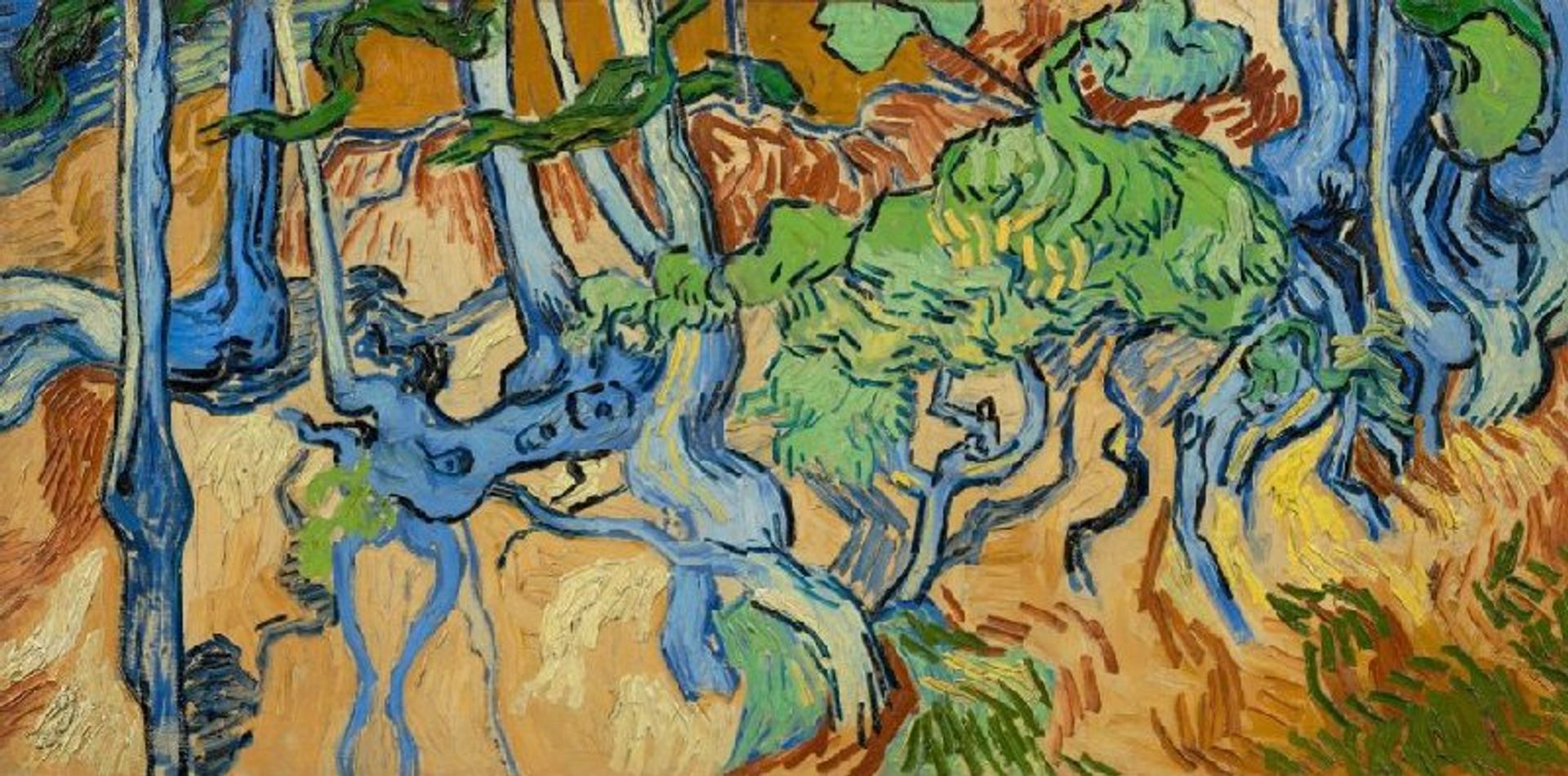
by Van Gogh tree roots (July 1890), painted the day he committed suicide
Credit: Van Gogh Museum, Amsterdam (Vincent van Gogh Foundation)
Van Gogh in Auvers-sur-Oise: his last months will be featured in amsterdam (May 12-September 3) and later in Parisat the Musée d’Orsay (October 3-February 4, 2024).
The curators of the exhibition meticulously dated all of its 74 surviving Auvers paintings, determining that “after six weeks the total amounted to about sixty paintings”. Excluding weekends, this amounts to two per day, an astonishing production. Perhaps the growing depression (and the larger size of some of the later images) accounts for a drop over the next four weeks.
Museums in Amsterdam and Paris have been surprisingly successful in collecting the loans. Of the 74 paintings in Auvers, 48 will be included. The Van Gogh Museum has nine in its permanent collection and seven in the Musée d’Orsay, the latter dating from the early 1950s, a gift from Dr. Paul Gachet, who treated the artist in his last weeks. These works by Gachet have very rarely been loaned out, so the Amsterdam exhibition will be an extremely unusual opportunity to see them in a wider context.
The remaining 32 Auvers paintings come from collections around the world. Seven are from private lenders, which means they are rarely shown. These include Garden in Auvers sur Oise (June 1890), much more stylized than most of his landscapes, and Vase with red poppies, cornflowers and daisies (June 1890).
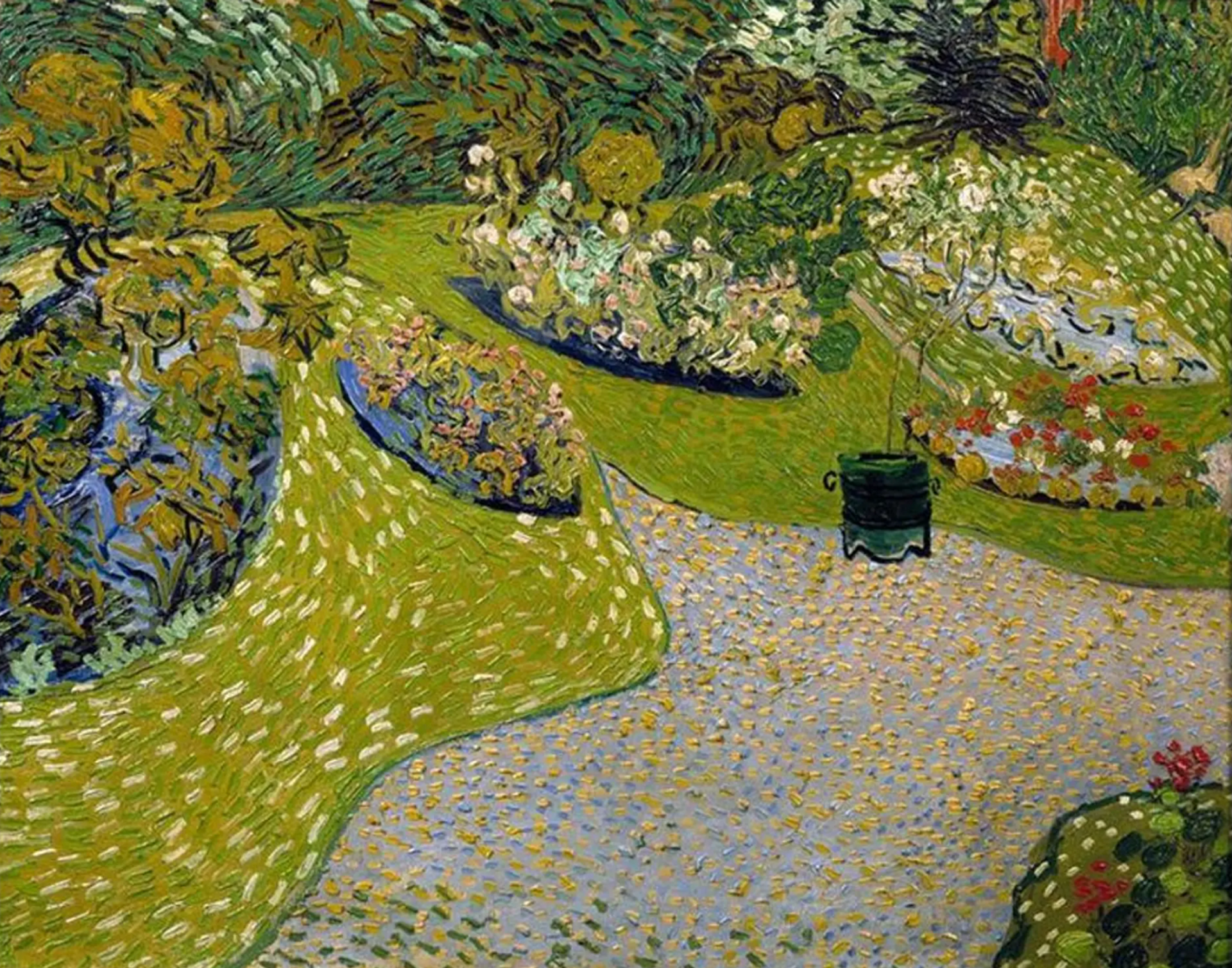
by Van Gogh Garden in Auvers (June 1890)
Credit: private collection
Strenuous efforts were made to try to unite Van Gogh’s 13 “double square” canvases (0.5 mx 1 m). These large-scale works include many of his finest late paintings. Only two proved impossible to borrow: Marguerite Gachet at the piano (June 1890, Kunstmuseum Basel) and Daubigny Garden (July 1890, Hiroshima Museum of Art).
Another loss was paintings from Russia, which were blocked after Putin invaded Ukraine. The three works of Auvers in Russian museums are thatched cottages(May 1890), White House at night with star (June 1890, both Hermitage Museum, Saint Petersburg) and Landscape with horse-drawn carriage and train (June 1890, Pushkin State Museum of Fine Arts, Moscow).
The largest painting from Auvers in private hands is the first version of the portrait of Doctor Paul Gachet (June 1890). After being sold for 82.5 million dollars in 1990, it was bought by a Japanese owner and then acquired by a mysterious european collector who did everything to remain anonymous. Even with the best contacts, this photo escaped the curators.
Another of the exhibition’s contributions to research was to find the places represented in the landscape paintings.
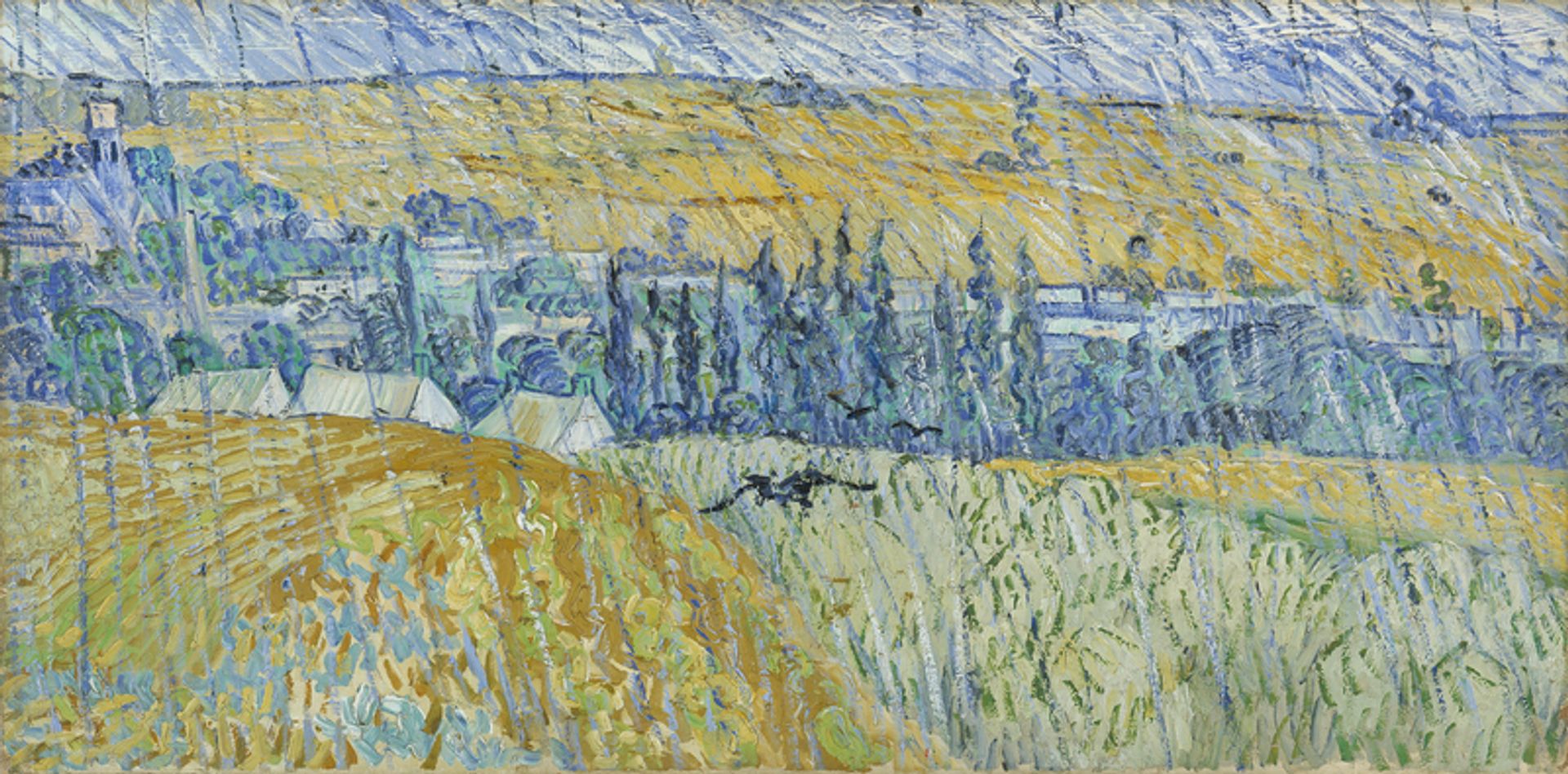
by Van Gogh Rain – Auvers sur Oise (July 1890)
Credit: National Museum of Wales, Cardiff
Two of the places depicted in the “double square” paintings have now been correctly identified, thanks to new research by Wouter van der Ween. Rain – Auvers sur Oise (July 1890), in the National Museum Wales, was painted across the Oise near Méry, and not wheat fields, as has often been supposed. Tate’s Farms near Auvers-sur-Oise (July 1890) is a scene in the hamlet of Cordeville. An 1887 photograph of the Cordeville location suggests that Van Gogh used artistic license to add another building to the center of his composition.
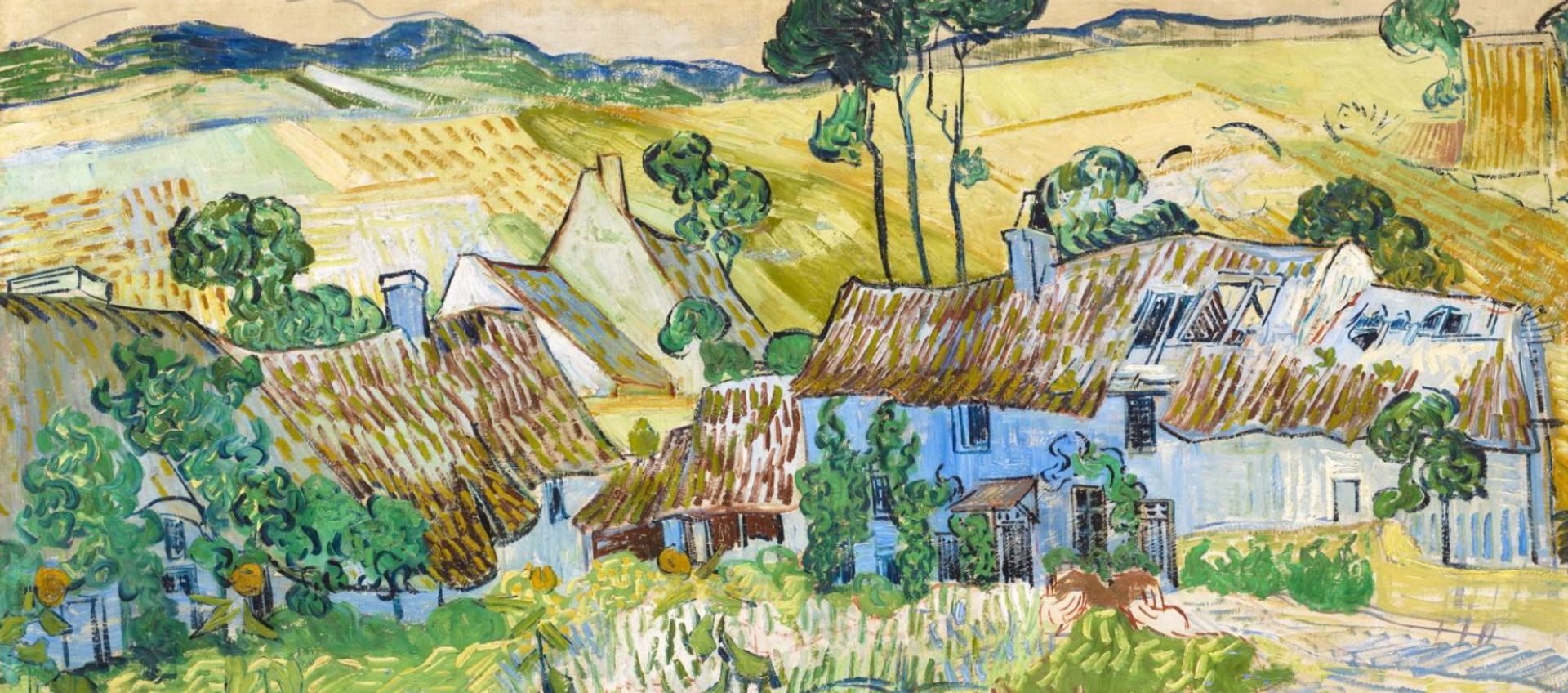
by Van Gogh Farms near Auvers-sur-Oise (July 1890)
Credit: Tate, London
Alongside the paintings, Van Gogh also produced nine large drawings and 48 smaller studies in Auvers, as well as filling a sketchbook. These can only be displayed occasionally, for conservation reasons, and most are barely known to the public and have never been thoroughly studied as a group.
The most personal sketch is Baby in a pram (June 1890). It probably depicts the artist’s four-month-old nephew, who was named Vincent in his honor. The child was brought to Auvers on a one-day visit to Auvers by his parents, Theo and Jo.
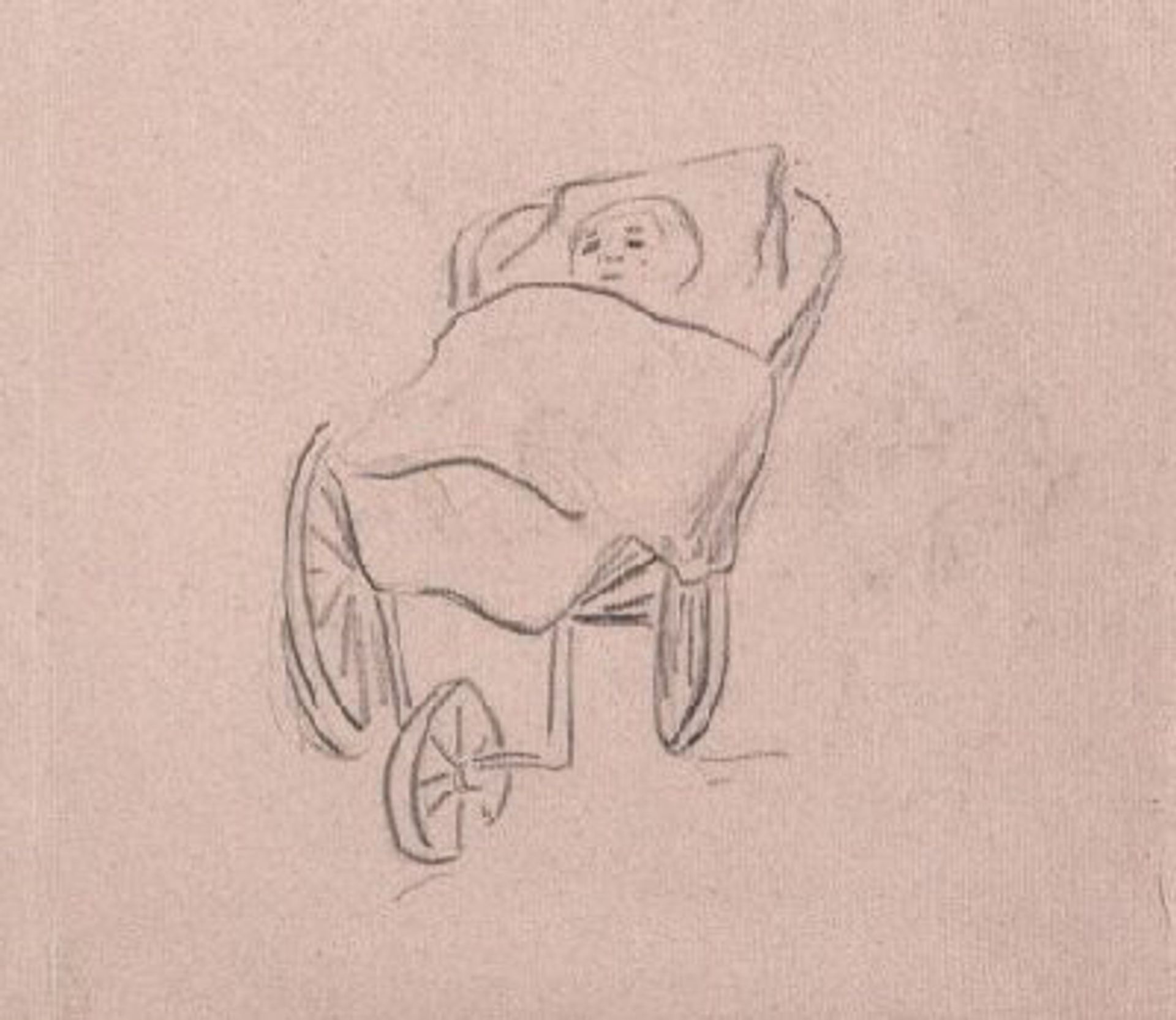
by Van Gogh Baby in a pram (June 1890), probably depicting his four-month-old nephew Vincent
Credit: Van Gogh Museum, Amsterdam (Vincent van Gogh Foundation)
The complete Amsterdam and Paris exhibitions are curated by Nienke Bakker, Louis van Tilborgh, Teio Meedendorp (all from the Van Gogh Museum) and Emmanuel Coquery (Musée d’Orsay). Their catalog also addresses the issue of Vincent’s fragile mental health and eventual suicide.
It was surprising in 2011 when a biography of Van Gogh claimed he was shot by a 16-year-old boy in Auvers, René Secretan. The curators of the exhibition dismiss this as a totally unfounded suggestion, a conspiracy theory: “When a person feels compelled to end their life, they at least deserve to be heard with empathy. Recognizing the signals and acknowledging the pain still matters, even in the case of a historical figure.
If Van Gogh’s life had not ended so tragically, how would his art have evolved after Auvers?
For more on the story of the last months of the artist, see my book Van Gogh finale: Auvers and the artist’s rise to fame.
Other Van Gogh short stories:
Christie’s and Sotheby’s are auctioning Van Gogh’s drawings of two men, both made almost at the same time and with the same dimensions. The designs have each been in their respective families since the 1960s and have very rarely been exhibited.
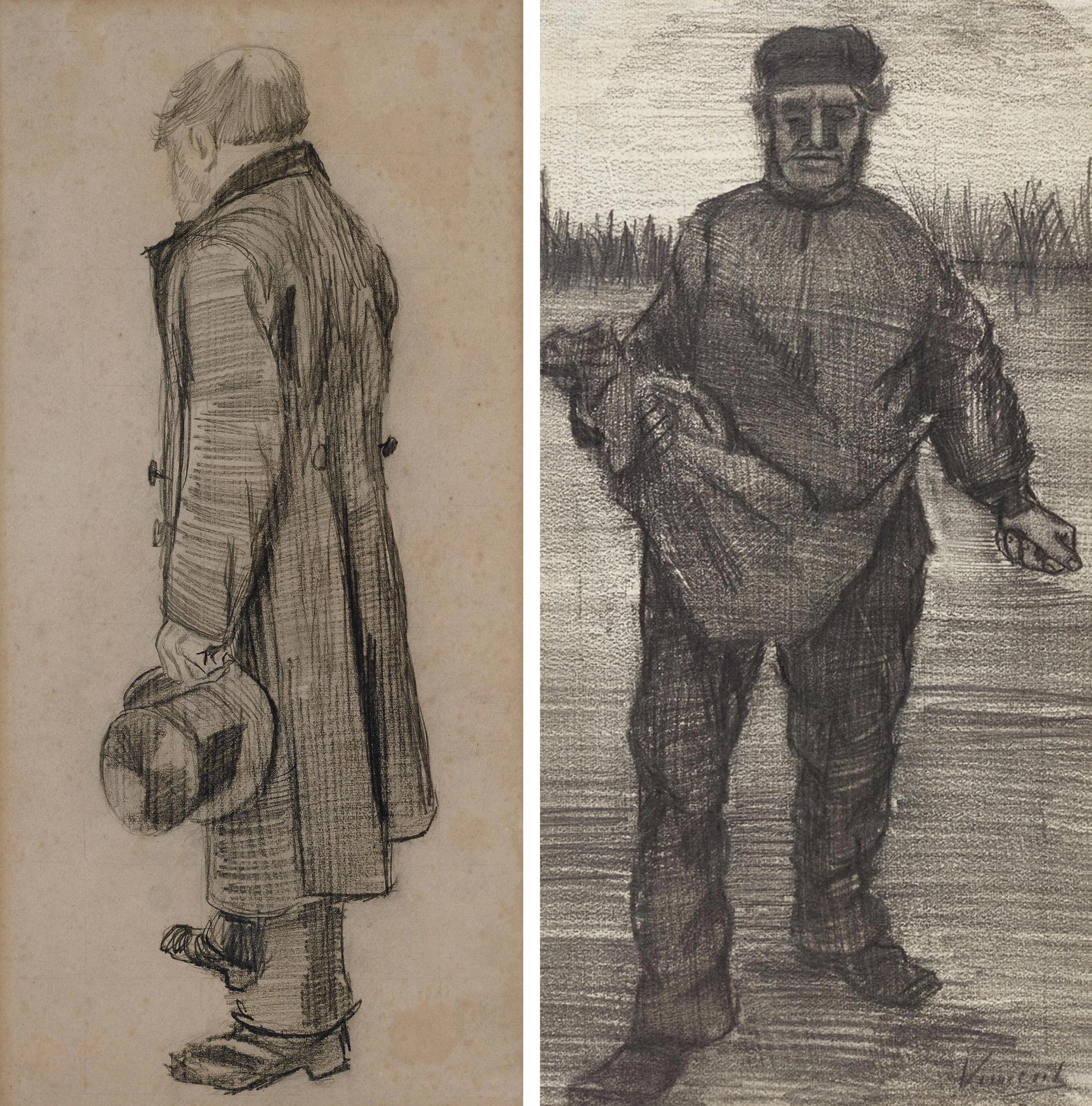
by Van Gogh Orphan with a top hat in his left hand (Weesman met een hoge hoed in zijn linkerhand) (September-December 1882), coming to Christie’s / Sower (front view) (December 1882), to come at Sotheby’s
Credits: © Christie’s / © Sotheby’s
Christie’s offers Orphan with a top hat in his left hand in New York on May 13, estimated between $400,000 and $600,000. It has been in the family of New York publicist Benjamin Sonnenberg since 1961.
Sotheby’s has Sower (front view)(December 1882), which is estimated between $550,000 and $650,000. It will go on sale May 17, four days after Christie’s sale.
Which will pay the most? Van Gogh’s orphan (the man from the hospice) or his sower?
